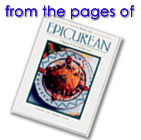
The most comprehensive book(s) ever published on food, The Cambridge World History of Food is comprised of 2,153 pages of small print in two volumes containing 4,000 entries and 170 essays. It took 224 contributors from 15 countries, seven years to complete. The scope of this book is interdisciplinary, ranging from anthropology to biology, chemistry, history, medicine, nutrition, pathology, politics, sociology, and zoology. It's so wide-ranging that the index takes up 263 pages.
While some areas are covered in mind-numbing detail, there is something here for everyone, and such a wealth of information on food, nutrition and world history that it will keep you busy and informed for years to come. As a reference work, it's compartmentalized in a way that makes browsing easy and enjoyable. The focus is academic and scientific, rather than culinary, and you will find references to the chemical properties, nutritional value, origin, medicinal uses, culinary uses etc. (in some cases more than you want to know), all backed up by extensive bibliographical notations.
The two volumes reconstruct what our ancestors ate; look at staple foods (both plant and animal); dietary liquids from breast milk to wine; gather the known scientific data concerning deficiencies, surfeits and food-related disorders; the history of agriculture in every part of the world; health fads and contemporary food-related government policy. The last 175 pages of text are given to an historical dictionary of the world's plant foods.
Considering the amount of information and the number of disciplines covered, the $150 introductory price is reasonable, but it does price it out of the market for casual consumers who are more likely to buy cookbooks. However, it offers a wealth of information, as well as cross references, for the nutritional or culinary professional, and for dedicated food enthusiasts.
My only reservation is that the work would have been more useful with color photos to illustrate each of the foods discussed. There are several black and white photos, and some illustrations, but color photos of each of the foods, especially within in the historical dictionary, would be particularly useful. They were probably omitted due to a lack of space (as it is, two fat volumes were required to fit in all of the written information), but we can hope for colored illustrations/photos for a future CD ROM version of this book.
|

